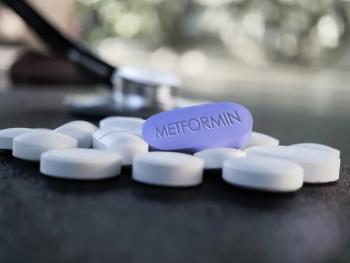
PPI use in first trimester not linked to congenital malformations
These findings may be useful for providers to practice shared decision-making with women regarding PPI use in early pregnancy.
As proton pump inhibitors (PPIs) become more frequently used during pregnancy, researchers have questioned whether their use may increase risk of specific types of congenital malformations.1,2
Researchers ultimately found that PPI use during the first trimester of pregnancy was not associated with a substantial increase in the risk of major congenital malformations, congenital heart defects, cleft palate, hydrocephalus, and hypospadias.
They did note, however, that small increased risks were present for major congenital malformations and congenital heart defects, but findings from sibling-controlled analyses suggested PPIs to be unlikely teratogens.
Researchers in South Korea conducted a population-based cohort study using data from the National Health Insurance Service-National Health Information Database of South Korea from 2010 to 2020. In total, they included data from 2,696,216 pregnancies in women aged 19 to 44 years between June 1, 2011, and December 31, 2019.3
Pregnant women with known exposure to teratogens or who delivered infants with chromosomal abnormalities or genetic syndromes were excluded. The data did not include race or ethnicity as the National Health Information Database does not include it.
In the study’s total of 2,696, 216 pregnancies—with an average maternal age of 32 years—40,540 women were exposed to PPIs during their first trimester.
The absolute risk of major congenital malformations, according to the report, was 396.7 per 10,000 infants in PPI-exposed pregnancies and 323.4 per 10,000 infants in unexposed pregnancies.
The propensity score–adjusted relative risks were 1.07 (95% CI, 1.02-1.13) for major congenital malformations, 1.09 (95% CI, 1.01-1.17) for congenital heart defects, 1.02 (95%CI, 0.72-1.43) for cleft palate, 0.94 (95% CI, 0.54-1.63) for hydrocephalus, and 0.77 (95% CI, 0.51-1.17) for hypospadias.
In the sibling-controlled analyses, no associations were observed between PPI use and primary outcomes, including major congenital malformations (odds ratio, 1.05; 95% CI, 0.91-1.22) and congenital heart defects (odds ratio, 1.07; 95% CI, 0.88).
These findings may be useful for providers to practice shared decision-making with women regarding PPI use in early pregnancy.
References
Meyer A, Fermaut M, Drouin J, Carbonnel F, Weill A. Drug use for gastrointestinal symptoms during pregnancy: a French nationwide study 2010–2018. PloS One. 2021;16(1):e0245854. doi:
Strand DS, Kim D, Peura DA. 25 years of proton pump inhibitors: a comprehensive review. Gut Liver. 2017;11(1):27-37. doi:
Choi A, Noh Y, Jeong HE, et al. Association Between Proton Pump Inhibitor Use During Early Pregnancy and Risk of Congenital Malformations. JAMA Network Open. 2023;6(1):e2250366. doi:10.1001/jamanetworkopen.2022.50366
Newsletter
Get the latest clinical updates, case studies, and expert commentary in obstetric and gynecologic care. Sign up now to stay informed.










